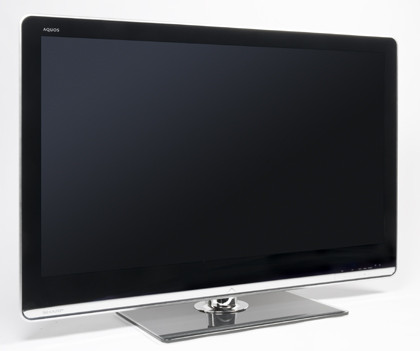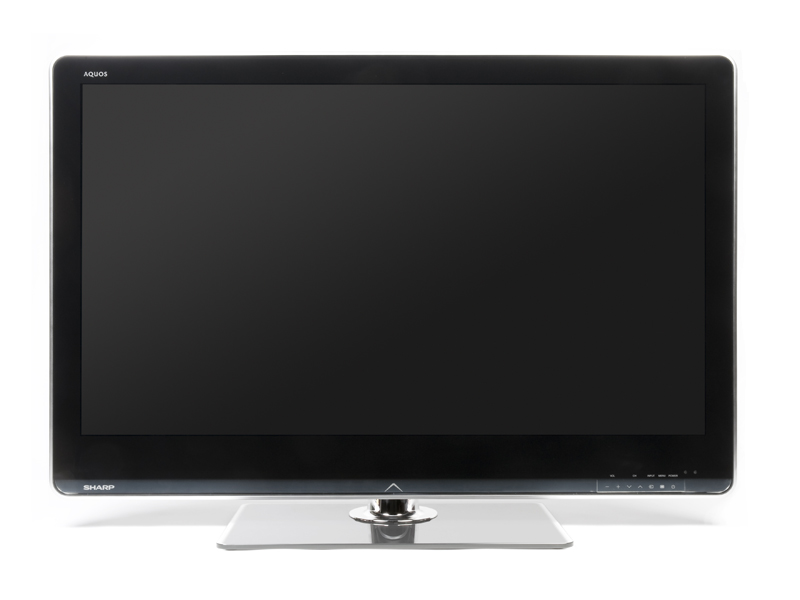Why you can trust TechRadar

While the 46LE821E's Quad Pixel technology talks a good talk, the proof of the pudding is, of course, in the eating. And you know what? Unlike some over-hyped bits of picture technology we've seen in recent years, this relatively quiet little trick really delivers the goods.
The set's colour response, for instance, is utterly spectacular. We'd been prepared for some degree of colour improvement, but the range, purity, dynamism and simple believability of its colour palette across all sources is startling.
Inevitably it's with yellow and gold colours that the impact of the yellow sub-pixel has its greatest impact, making us realise with a jolt just how relatively unimpressive many rival flat TVs are at showing these colours.
But running the 46LE821E alongside a couple of other LCD TVs we had lying around - including an older Sharp - shows real improvements in the appearance of almost every colour we focussed on.
Even the most drably shot of programmes, like EastEnders, thus looks rich and dynamic rather than their usual monotone on the 46LE821E.
Colours
Colour blends look immaculately smooth too, which has a profound effect on skin tones in particular, and helps enhance your insight into the picture as a whole.
Sign up for breaking news, reviews, opinion, top tech deals, and more.
Even Philips' flagship 9000 series of LCD TVs don't manage to portray colours with quite the same combination of vigour and subtlety - and that's saying something.
Looking for other signs of Quad Pixel benefits, the 46LE821E's pictures are also outstandingly bright. This in itself isn't necessarily a strength unless you've got a heck of a lot of ambient light in your room. But having so much light pouring through the LCD array seems to play a key part in just how precise and detailed colours look.
The extra transparency plays its part as billed, too, during dark scenes. For in combination with the edge-LED lighting, it proves extremely effective at subtle shadow detailing. There's little if any sense of that rather hollow look to dark scenes that plagues so many LCD TVs - even direct LED ones.
Moving on to strengths of the picture that probably aren't to do with the yellow sub-pixel, HD images look extremely detailed, textured and crisp. We'd been concerned that the difficulties inherent in fitting 1920x1080 extra sub-pixels into the picture might have led to some problems in this area, but apparently not.
It does no harm to the image's clarity, either, that the TV's anti-judder and 100Hz processing does a decent job of sharpening and smoothing the progress of moving objects.
One final string to the 46LE821E's bow is its standard definition pictures, which are upscaled to the TV's full HD resolution much more sharply and cleanly than has been the case with many past Sharp TVs. The set's colour tone holds up nicely during the standard to high definition trip, too.
Imperfections
For all their mesmerising strengths, though, the 46LE821E's pictures aren't completely perfect. The main reason for this is the way bits of dark scenes that should look black instead look rather grey. Some little portions of the screen also look a bit unnaturally brighter than others too. And both of these problems are exacerbated considerably if you have to watch the screen from much of an angle.
The motion processing, meanwhile, can throw up more side effects - like shimmering around moving objects - than some rival engines. And finally, the screen is a little more prone to reflections than we'd like.
Current page: Sharp Quattron LC46LE821E: Picture quality
Prev Page Sharp Quattron LC46LE821E: Ease of use Next Page Sharp Quattron LC46LE821E: Sound quality and value
John has been writing about home entertainment technology for more than two decades - an especially impressive feat considering he still claims to only be 35 years old (yeah, right). In that time he’s reviewed hundreds if not thousands of TVs, projectors and speakers, and spent frankly far too long sitting by himself in a dark room.
